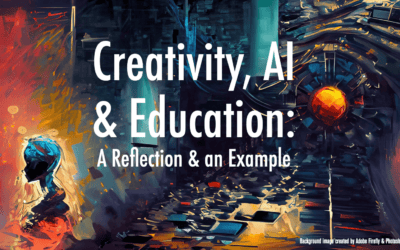I guess ’tis the season of Math-Po’s! Sue VanHattum, whose challenge started all this, commented on my recent Math-Po (Math-Po (Mathematical Poetry): Goldbach’s Conjecture) by providing an example of her own writing, a poem titled Imaginary Numbers Do the Trick. That piece so inspired me that I spent the next hour (and a good part of a faculty meeting), writing one on the same idea. A close read of both these poems (hers and mine) will reveal that I was more than inspired… some phrases and words from Sue’s work insinuated themselves into my pre-frontal cortex and ended up in my poems. As they say, plagiarism is the sincerest form of flattery. Read, The Mathematical i, after the cartoon…
The Mathematical i
The negative numbers were full of dismay
We have no roots, they were heard to say
What, they went on, would be the fruit
of trying to find our square root?
Matters seem to be getting out of hand
Since the negatives have taken a stand,
On the fact that positives have two roots, while they have none
They plead, would it have killed anybody to give us just one?
The square roots of 4 are + and – 2! As for -4? How unfair,
He has none! None at all. Do the math gods even care?
This lack of roots, our value does undermine
Is it some sinister plan, ‘cos we’re on the left of the number-line?
Among the more irrational negatives, one even heard cries
It is time, they said, it is time, to radicalize!!
Hearing this non-stop (somewhat justified) negativity
The mathematicians approached the problem with levity
And suggested a solution, kinda cute and fun
Lets rename, they said, the square root of minus 1!
In essence lets re-define the problem away, on the sly
by just calling this number (whatever it may be) i.
i times itself would be one with an negative sign
Every negative could now say, a square root is mine!
This simple move would provide the number -36
With two roots, + & – 6i, what an awesome fix!
The positives grumbled, what could be dumber
Than this silly imaginary number
But it was too late, much too late you see
To bottle this rather strange mathematical genie
i was now a part of the the symbolic gentry
Finding lots of use in, of all places, trigonometry.
With time i began its muscles to flex
extending the plane, making it complex!
In fact, hanging out with the likes of e and Pi
i got bolder, no longer no longer hesitant and shy.
And combined to form equations bold and profound
That even today, do not cease to astound.
Consider for a moment the equation
e to the power Pi i plus 1
It was Euler who first saw, how these variable react
To come up with a beautiful mathematical fact,
To total up to, (surprise) the number zero.
Could we have done it without our little imaginary hero?
Even today Euler’s insight keeps math-lovers in thrall
One equation to rule them all.
So if you want to perceive the value of this little guy
I guess you have to just develop your mathematical i.
It may also help you remember how often we forget to see
The significance, to human life, of the imaginary.
In this poem I have tried to keep the math as correct as possible – and I dare say, I have succeeded. Incidentally the equation stated in the last but one paragraph
![]() (e to the power Pi i plus one = zero)
(e to the power Pi i plus one = zero)
is maybe the most elegant equation in mathematics. As a page on MathForum states, in this equation:
… you combine the five big constants in mathematics: 0, 1, i, Pi, and e. You also get the three main operations: +, *, and exponentiation. And you get the notion of equality, which is so key in mathematics.
And I just discovered a wonderful page that attempts to explain this equation in plain English, check out Understanding Without Proof.
Addendum (Posted, quite appropriately, on the palindromic date of Feb 2, 2020 aka 02022020): A reader kindly pointed out that the link to “understanding without proof” above wasn’t working any more. A more updated link is given below in the comments but more importantly I came across another wonderful explainer (with a video and some additional links) here.


I am delighted to have found this poem and the shortened, more accessible version at the website:
https://poetrywithmathematics.blogspot.com/2020/01/poetically-exploring-the-invention-of-i.html#more
I would love to see Understanding without Proof but the link is down.
Investigating further, I found that the website was run by: Robert J. Chassell.
He has died and his family have left a memorial at:
http://www.rattlesnake.com/
and the subdirectories have been removed.
I hope someone can provide another link to a similar proof and ideally to other work that was available there.
I am just starting to explore links between maths, poetry, education and my maths tutoring. Thanks for this great start.
Thanks for your comment. A bit of internet research lead me to this page
https://stallman.org/Bob-Chassell/Choice-and-Constraint.html#Understanding-Without-Proof
Hope that helps.
i like it…
The link Understanding without Proof is interesting but a bit misleading. De Moivre’s formula is e^(i x)=cos(x) + i sin(x). Put x=pi to get the formula. The material in the link can be understood by connecting with de moivre’s formula…and then some inaccuracies surface. But anyway, interesting.